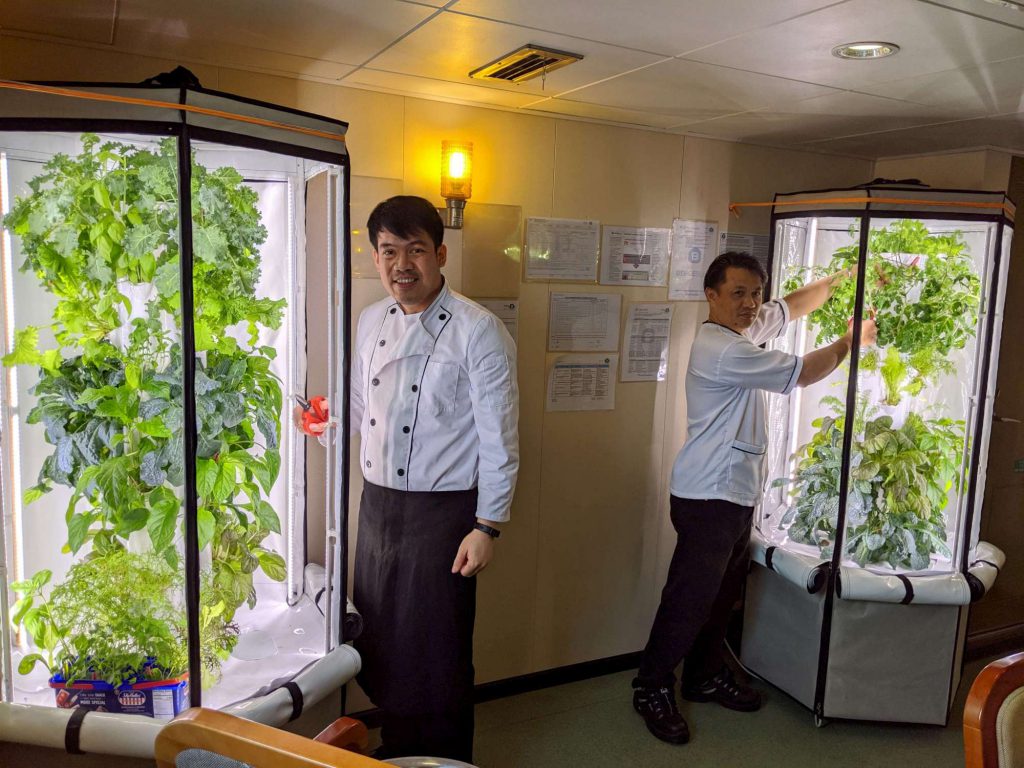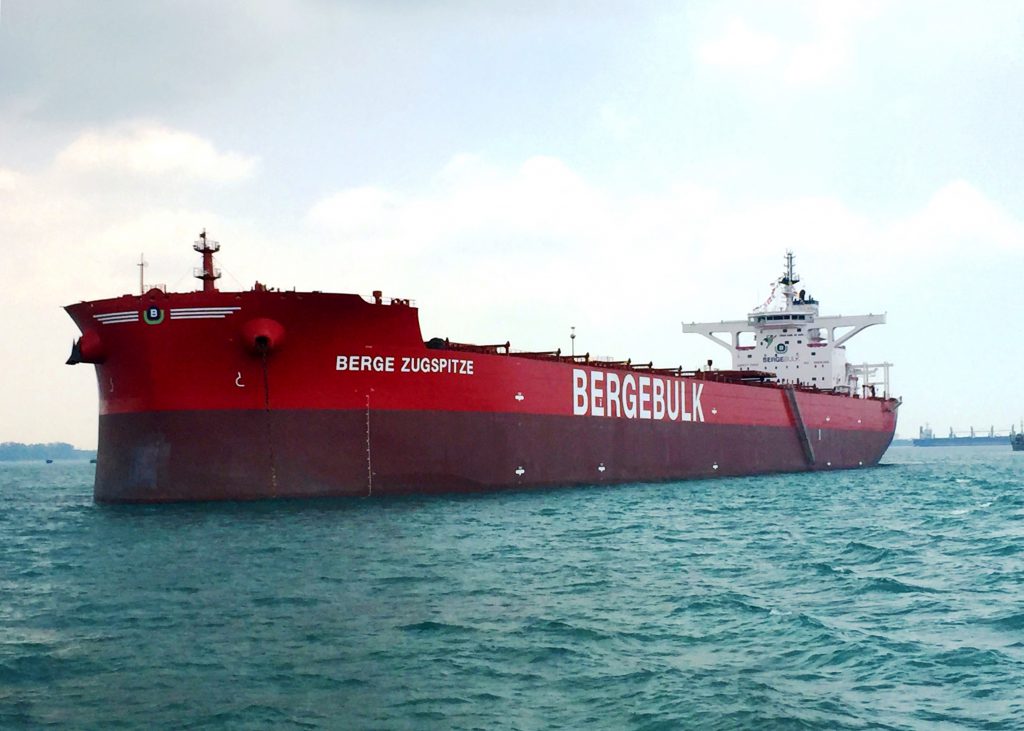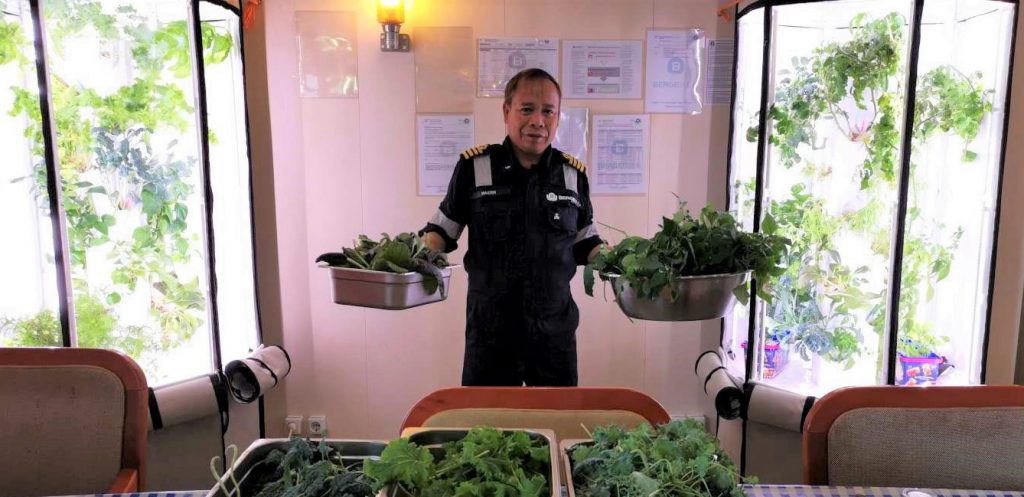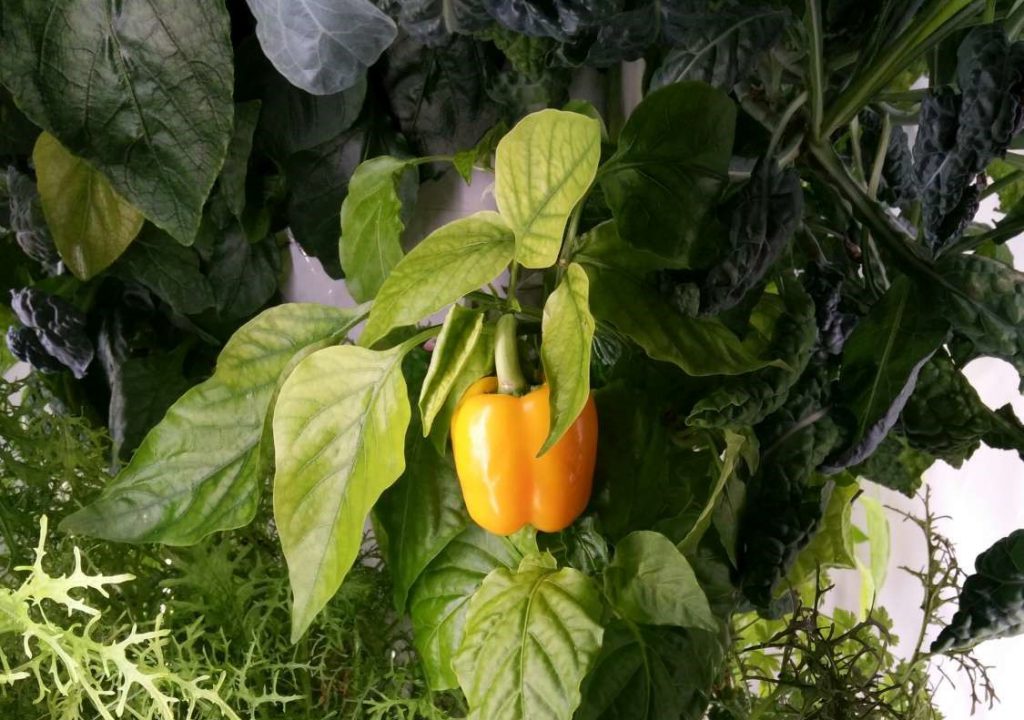Anyone who has travelled on a commercial vessel knows that those vegetables that were so fresh when first loaded look and taste quite tired by the end of a long voyage.
However, the crew of Berge Bulk’s 211,000-dwt Berge Zugspitze (built 2016) has taken alternative measures to secure a steady source of fresh greens.
Last year, with the help of the Singapore-based shipowner, mariners installed a vertical hydroponic system to create a vertical garden at sea to grow up to 27 different plants at a time in one square metre of space.
Photographs posted by the company on social media show the garden has begun to supply the crew with a steady crop of juicy vegetables and fresh herbs.
“We see the veggies growing right in front of our own eyes,” Captain Bernie P Besa, the master of the Berge Zugspitze, said. “They come straight from our garden to our kitchen. Since Covid-19, we’re all more conscious about health and hygiene. It’s nice to know that we are eating produce that hasn’t been handled by other people.”
Sherwin Laniog, the vessel’s chief cook, said the fresh greens add a little bit of crispness and variety to the food he prepares.
“There are some vegetables that we have never heard of before and we are so glad we get to explore our palates a little bit,” he said.
“My favourite part of this is harvesting herbs such as parsley and coriander, as these are often challenging to request in certain port calls. So far, though, the most popular vegetables we have grown are kale, mustard greens, mizuna and coriander.”

Berge Zugspitze’s chief cook Sherwin Laniog and messman Reynaldo Manalo enjoy harvesting fresh greens to bring life to salads they prepare on board.
Berge Bulk said the ultimate goal of bringing these gardening systems on board is to capture a ship’s CO2 emissions, while at the same time provide fresh, sustainable produce the crew can harvest.
TradeWinds suspects the ability to do a spot of gardening during non-working hours may also be a good stress-busting activity for the crew.
The response to the project from veteran mariners and industry executives on Berge Bulk’s social media pages has been overwhelmingly positive.

“I never thought about this 10 years ago. I only remember eating white cabbage salad and canned fruits after three weeks from the last port,” a former master mariner, now working in a senior shore-based position, said.
Turning the Berge Zugspitze into a floating farm turns the clock back a century or so to a time when refrigeration was not common on ships. Back then, they often used to even carry a couple of cows and a few hens to provide fresh milk and eggs.
Originally published on Tradewinds.com by Dale Wainwright and Jonathan Boonzaier on 21 August 2020.

